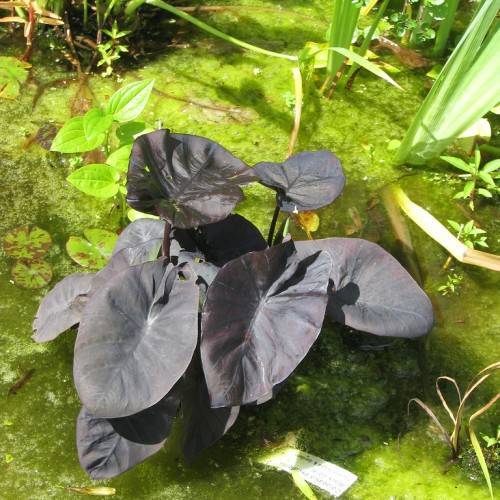
taro
Colocasia esculenta 'Kona Coffee'
Also Known As - coloyam,elephant's ear,elephant's earCycle:
Perennial
Watering:
Frequent
Hardiness Zone:
8 - 10
Flowers:
Flowers
Sun:
Filtered shade, Part sun/part shade
Soil:
Acidic, Bog, Humus rich
Fruits:
Fruits Ready In Fall
Edible:
Yes
Leaf:
Yes
Growth Rate:
Low
Maintenance:
Moderate
Salt Tolerant:
Yes
Care Level:
Medium
watering
Taro (Colocasia esculenta 'Kona Coffee') plant should be watered every 5-7 days. Depending on the season and type of soil, the amount of water varies. During the spring and summer, when the plant is actively growing, it should be watered deeply and allow the soil to dry out between waterings. In the fall and winter, it should be watered more sparingly to prevent the roots from staying wet for too long. In sandy soil, taro will need more frequent watering than in heavier soils. If the soil feels dry to 2 inches below the surface, it is time to water. Generally, taro plants should receive enough water that it is soaking into the root zone, but not enough that the soil is soggy or waterlogged.
sunlight
Taro (Colocasia esculenta 'Kona Coffee') plants require 6-8 hours of direct sunlight each day in order to perform optimally. These plants are most comfortable in temperatures between 63-85°F and can be easily damaged by temperatures that are too hot or too cold. In general, the best time of day for the plant to receive sunlight is during the morning and afternoon hours, avoiding any strong sunlight during the middle of the day. When growing a Taro plant indoors, it would be beneficial to place the plant close to a window where there is direct access to sunlight.
pruning
Taro (Colocasia esculenta 'Kona Coffee') should be pruned in late summer when the plant is actively growing. As growth begins to slow for the season, trim away the old foliage, removing any dead or dying plant material. Remove any spent flowers or seed pods as well. Prune the plant to the desired shape and size, taking care to remove only the excess foliage and not removing more than about 1 third of the total amount of foliage at a time. Pruning will help promote healthy, even growth for the next season.
